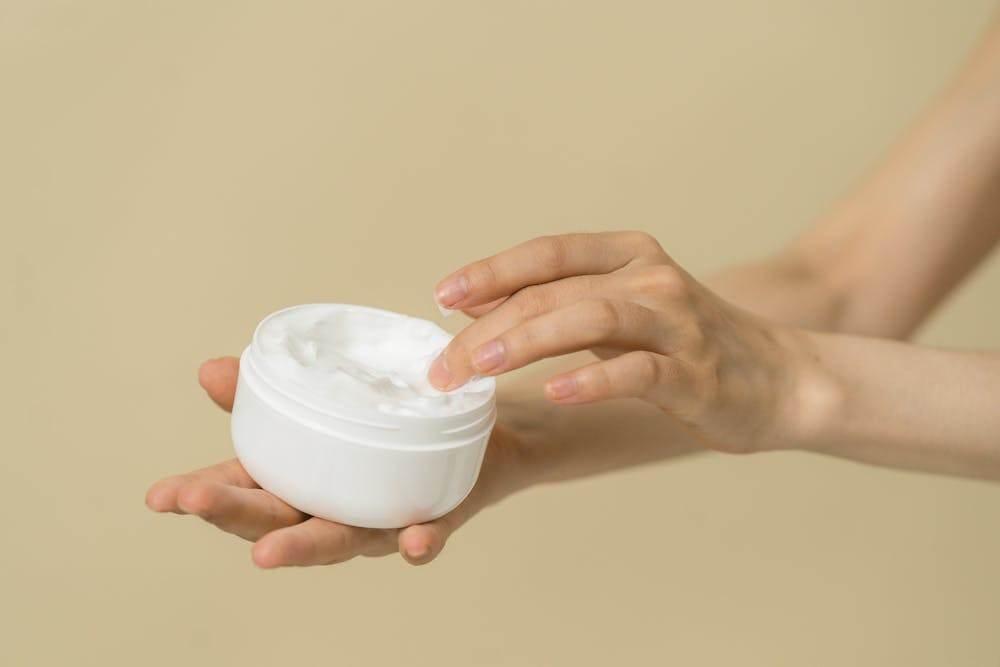You've been standing in the honey aisle, carefully reading labels, looking for that magic word: "raw." You find it, pay the premium price, and walk away confident you're bringing home nature's perfect superfood. But here's a shocking truth that the honey industry doesn't want you to know: that jar of "raw" honey in your pantry might be anything but raw.
The reality is both frustrating and eye-opening. The honey market is flooded with products masquerading as raw when they've been heated, ultra-filtered, and stripped of everything that makes honey beneficial. You've been paying premium prices for a product that's essentially honey-flavored syrup, and it's completely legal.
The FDA's Honey Loophole: A Regulatory Wild West
Here's the first bombshell: the FDA has no legal definition for "raw honey." Read that again. The agency responsible for regulating food safety and labeling has simply left honey manufacturers to police themselves when it comes to the term "raw."
This regulatory gap isn't an oversight – it's a massive loophole that allows manufacturers to slap "raw" on virtually any honey product. Your jar could have been heated to 180°F, filtered through microscopic screens, blended with corn syrup, and still legally carry the "raw" label. There's literally no one checking.
This lack of regulation stands in stark contrast to other food categories. Try mislabeling organic produce or grass-fed beef – you'll face serious consequences. But honey? It's the Wild West, and consumers are paying the price.
The Economic Incentive for Deception
Understanding why this happens requires looking at the economics. True raw honey costs more to produce, has a shorter shelf life, and doesn't always look perfect. Processed honey, on the other hand, can be mass-produced cheaply, shipped across oceans, and stored indefinitely without crystallizing or separating.
When manufacturers can charge premium "raw honey" prices for processed products, the profit margins are enormous. Why would they change a system that's so profitable? Especially when there's zero enforcement to worry about.
What You're Really Buying: The Processing Hall of Horrors
To understand what you're actually getting when you buy most commercial "raw" honey, let's walk through the typical processing pipeline that strips honey of its beneficial properties.
Heat Treatment: Killing the Living Enzymes
Most commercial honey undergoes pasteurization – heating to temperatures between 145°F and 180°F. This process isn't required for safety (real raw honey is naturally antimicrobial), but it serves the manufacturer's interests perfectly. Heat treatment prevents crystallization, creates a uniform appearance, and extends shelf life indefinitely.
But here's what heat does to your honey: it destroys the delicate enzymes that provide many of honey's health benefits. Enzymes like glucose oxidase, which produces hydrogen peroxide and gives honey its antimicrobial properties, are completely inactivated by heat. The diastase enzyme, which aids digestion, is similarly destroyed.
When you consume heated honey, you're getting sugar water with honey flavor. The living, bioactive compounds that your body craves are gone.
Ultra-Filtration: Removing Nature's Fingerprints
After heating, most commercial honey goes through ultra-filtration – a process that removes virtually all pollen, propolis, and other beneficial particles. This isn't gentle straining; it's industrial-grade filtration that strips honey down to its basic sugar components.
Why remove the pollen? Because pollen is honey's fingerprint – it tells you exactly where the honey came from. Removing pollen makes it impossible to trace the honey's origin, which is convenient when you're blending honey from multiple countries or adding cheap fillers.
Pollen isn't just a marker of authenticity; it's a crucial component of honey's nutritional profile. Bee pollen contains proteins, vitamins, minerals, and enzymes that contribute to honey's health benefits. Remove the pollen, and you've removed a significant portion of honey's nutritional value.
Blending and Adulteration: The Final Insult
Many commercial honeys are blended with cheaper syrups – corn syrup, rice syrup, or sugar syrups that can fool basic testing methods. These adulterants are often added in quantities up to 50% or more, yet the product can still legally be called "honey."
The blending often happens with honey from multiple countries, including regions known for adulterated honey products. By the time this mixture reaches your grocery store shelf, it bears little resemblance to what bees actually produced.
How to Spot Fake or Processed "Raw" Honey
Learning to identify genuine raw honey requires understanding what real honey looks like, tastes like, and behaves like. The differences are more obvious than you might think once you know what to look for.
The Crystal Clear Red Flag
If your honey is crystal clear, perfectly transparent, and looks like liquid glass, it's almost certainly processed. Real raw honey has a cloudy, opaque appearance due to the presence of pollen, propolis, wax particles, and other beneficial compounds that haven't been filtered out.
Raw honey often has visible particles floating in it – these aren't impurities, they're signs of authenticity. You might see small pieces of wax, pollen grains, or other hive materials. These particles are actually beneficial and indicate the honey hasn't been ultra-filtered.
The Crystallization Test
Here's a simple test: leave your honey at room temperature for several months. Real raw honey will eventually crystallize – it's a natural process that occurs when glucose separates from water. The crystallization might be complete or partial, and the crystals might be fine or coarse depending on the floral source.
If your honey never crystallizes, remains perfectly liquid indefinitely, and maintains the same consistency month after month, it's been processed to prevent natural crystallization. This processing destroys many of honey's beneficial properties.
Texture and Consistency Clues
Raw honey has character – its texture varies depending on the season, floral sources, and natural conditions when it was produced. It might be thick and creamy, slightly granular, or even partially crystallized. This variation is normal and desirable.
Processed honey, on the other hand, maintains perfect consistency. It pours the same way every time, has the same texture regardless of temperature, and never varies from batch to batch. This uniformity is a clear sign of industrial processing.
The Taste Test
Raw honey has complex, nuanced flavors that reflect its floral sources and local environment. You might taste hints of wildflowers, clover, orange blossom, or other plants the bees visited. The flavor can vary significantly from jar to jar, even from the same producer.
Processed honey tastes like... honey flavor. It's sweet, uniform, and lacks the complexity of real raw honey. Once you've tasted authentic raw honey, the difference becomes unmistakable.
The Hidden Health Costs of Fake Raw Honey
When you're unknowingly consuming processed honey instead of raw honey, you're missing out on significant health benefits that drew you to honey in the first place.
Lost Antimicrobial Properties
Real raw honey's antimicrobial properties come from enzymes, hydrogen peroxide production, and other bioactive compounds. These properties have been used medicinally for thousands of years and are supported by modern research. Processed honey loses most or all of these antimicrobial benefits.
This means you're not getting the immune support, wound healing properties, or natural preservation benefits that make raw honey valuable for health applications.
Missing Antioxidant Power
Raw honey contains numerous antioxidants – flavonoids, phenolic acids, and other compounds that fight free radical damage in your body. Processing significantly reduces or eliminates these antioxidants, leaving you with empty calories instead of functional nutrition.
The antioxidant content of honey varies by floral source, but processing eliminates this variation by destroying the delicate compounds responsible for antioxidant activity.
Digestive Enzyme Deficiency
Raw honey contains enzymes that aid digestion and support gut health. These enzymes are completely destroyed by heat processing, meaning processed honey provides no digestive benefits despite being marketed as a health food.
For people using honey to support digestive health or as a natural remedy for various conditions, processed honey provides none of the expected benefits.
Glycemic Impact Differences
The complex carbohydrates and enzymes in raw honey help moderate its glycemic impact compared to processed honey, which behaves more like pure sugar in your body. If you're choosing honey over refined sugar for blood sugar reasons, processed honey defeats the purpose.
What Authentic Raw Honey Actually Looks Like
Understanding the characteristics of genuine raw honey helps you make informed purchasing decisions and recognize quality when you see it.
Visual Characteristics
Authentic raw honey is opaque or cloudy, never crystal clear. It may have a creamy, thick consistency or be partially crystallized. You should see visible particles – pollen, small wax pieces, or other natural materials from the hive.
The color can vary significantly even within the same batch, reflecting the diverse floral sources bees visited. This natural variation is a sign of authenticity, not a quality defect.
Seasonal and Regional Variations
Real raw honey changes throughout the year as different plants bloom and weather conditions vary. Your spring honey might taste completely different from your fall honey, even from the same beekeeper. This variation is desirable and indicates the honey reflects its natural environment.
Regional differences are also significant. Honey from different areas has distinct characteristics based on local flora, climate, and soil conditions. This terroir effect is similar to wine and is completely eliminated in processed honey.
Natural Aging and Changes
Raw honey is a living food that continues to evolve after harvest. It may crystallize, separate, or change texture over time. These changes are normal and don't indicate spoilage – they're signs that your honey is authentic and unprocessed.
Embrace these natural changes rather than viewing them as defects. They indicate you have a genuine product that retains its beneficial properties.
Finding Truly Raw Honey: Your Action Plan
Now that you understand the deception in the honey market, you need strategies for finding genuine raw honey that delivers the health benefits you're seeking.
Source Directly from Beekeepers
The most reliable way to get authentic raw honey is buying directly from local beekeepers. Visit farmers markets, contact local beekeeping associations, or search online for beekeepers in your area. Most small-scale beekeepers produce genuinely raw honey because they lack the equipment for large-scale processing.
When you buy direct, you can ask questions about harvesting and handling methods, see photos of the operation, and often visit the apiary yourself. This transparency is impossible with commercial honey brands.
Look for Specific Certifications
While "raw" isn't regulated, some third-party certifications provide assurance. Look for honey certified by organizations that have specific standards for raw honey processing and testing.
Some beekeepers voluntarily submit to testing that verifies enzyme activity levels, pollen content, and absence of adulterants. These certifications cost money and effort, indicating a commitment to quality.
Read Beyond the Front Label
Examine the entire label, not just the "raw" claim on the front. Look for information about the honey's origin, floral source, and processing methods. Vague labels with minimal information are red flags.
Quality producers are proud of their methods and happy to share details about their honey's source, harvest methods, and handling. They often include information about the specific flowers their bees visited and the region where the honey was produced.
Ask the Right Questions
Whether buying from a store or directly from a producer, ask specific questions:
- Has this honey been heated at any point?
- What temperature was it processed at?
- Has it been filtered, and if so, how?
- Where exactly did this honey come from?
- Can you provide test results showing enzyme activity?
Legitimate raw honey producers welcome these questions. Evasive answers or inability to provide specific information are warning signs.
The Price of Authenticity: Understanding True Costs
Real raw honey costs more than processed honey, and understanding why helps you evaluate whether you're getting authentic products.
Production Costs
Genuine raw honey requires more careful handling, has a shorter shelf life, and can't be mass-produced as efficiently as processed honey. These factors increase costs throughout the supply chain.
Small-scale beekeepers who produce truly raw honey often can't compete on price with industrial operations that process thousands of gallons at once. This price difference is reflected in the final product cost.
Quality vs. Price Correlation
Extremely cheap "raw" honey is almost certainly processed or adulterated. While you don't need to buy the most expensive option, suspiciously low prices should raise red flags.
Calculate the cost per ounce and compare similar products. Quality raw honey typically costs 2-3 times more than standard commercial honey, reflecting the additional care and lower efficiency of small-scale production.
Long-term Value
When evaluating price, consider the health value you're receiving. If you're buying honey for its health benefits, paying more for authentic raw honey that actually provides those benefits makes economic sense compared to buying processed honey that offers only empty calories.
Storage and Handling: Preserving Your Investment
Once you've found authentic raw honey, proper storage ensures you maintain its beneficial properties and get maximum value from your investment.
Temperature Control
Store raw honey at room temperature in a cool, dry place. Avoid temperature extremes, which can accelerate crystallization or cause separation. Never refrigerate raw honey – cold temperatures speed up crystallization and can make the honey difficult to use.
If your honey crystallizes, don't panic. Gentle warming in a warm water bath (never above 110°F) can reliquefy crystallized honey without destroying its beneficial properties.
Container Considerations
Keep honey in its original container or transfer to glass jars with tight-fitting lids. Avoid plastic containers for long-term storage, as honey can absorb odors and flavors from plastic.
Ensure containers are completely clean and dry before transferring honey. Any moisture can promote fermentation, especially in raw honey with higher moisture content than processed varieties.
Recognizing Quality Changes
Learn to distinguish between normal changes in raw honey and signs of deterioration. Crystallization, texture changes, and color variations are normal. Fermentation (indicated by bubbling, alcohol smell, or excessive foam) indicates quality problems and potentially dangerous bacterial growth.
The Bigger Picture: Supporting Authentic Food Systems
Choosing authentic raw honey represents more than just a personal health decision – it's a vote for transparent, sustainable food systems.
Supporting Small Producers
When you buy genuine raw honey from small beekeepers, you're supporting agricultural practices that benefit local ecosystems. These operations typically maintain diverse floral landscapes, avoid harmful chemicals, and contribute to pollinator health.
Your purchasing decisions help keep small-scale beekeepers in business, preserving traditional methods and genetic diversity in bee populations.
Environmental Impact
Industrial honey processing requires significant energy for heating, filtering, and transportation. Raw honey from local sources has a much smaller environmental footprint while providing superior nutritional value.
Choosing local raw honey also reduces the demand for imported honey, which often involves questionable production practices and contributes to the adulteration problem.
Food System Transparency
By demanding authentic raw honey and asking questions about production methods, you're advocating for greater transparency in food labeling and production. Consumer demand drives industry standards, and informed consumers can push for better regulation and clearer labeling.
Your Next Steps: Becoming a Honey Detective
Armed with this knowledge, you can navigate the honey market with confidence and ensure you're getting authentic raw honey that provides real health benefits.
Start by examining any honey you currently have at home. Apply the tests and observations described in this article. You might be surprised by what you discover about products you thought were raw.
Next, seek out sources of authentic raw honey in your area. This might require some research and potentially paying higher prices, but the health benefits and superior taste make the investment worthwhile.
Finally, become an advocate for honey authenticity. Share your knowledge with friends and family, ask retailers about their honey sourcing, and support producers who maintain transparent, ethical practices.
The honey market may be filled with deception, but informed consumers can still find authentic products that deliver the remarkable benefits that have made honey a treasured food for thousands of years. Your health – and your taste buds – will thank you for making the effort to find the real thing.






